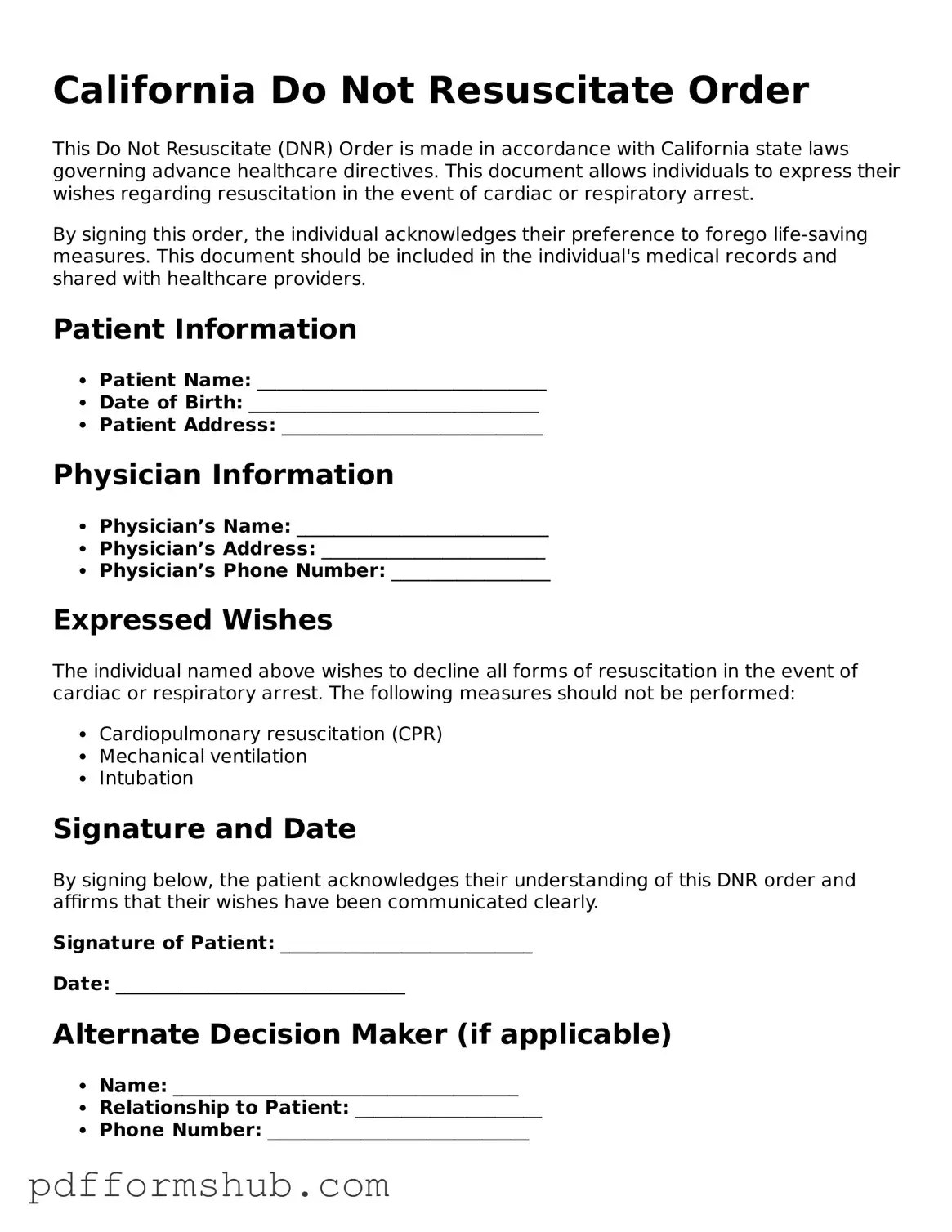Attorney-Verified Do Not Resuscitate Order Form for California State
A California Do Not Resuscitate (DNR) Order form is a legal document that allows individuals to refuse resuscitation efforts in the event of a medical emergency. This form ensures that healthcare providers respect the wishes of patients regarding life-sustaining treatments. Understanding and completing this form can provide peace of mind for both patients and their loved ones.
Take control of your healthcare decisions by filling out the DNR form. Click the button below to get started.
Customize Form
